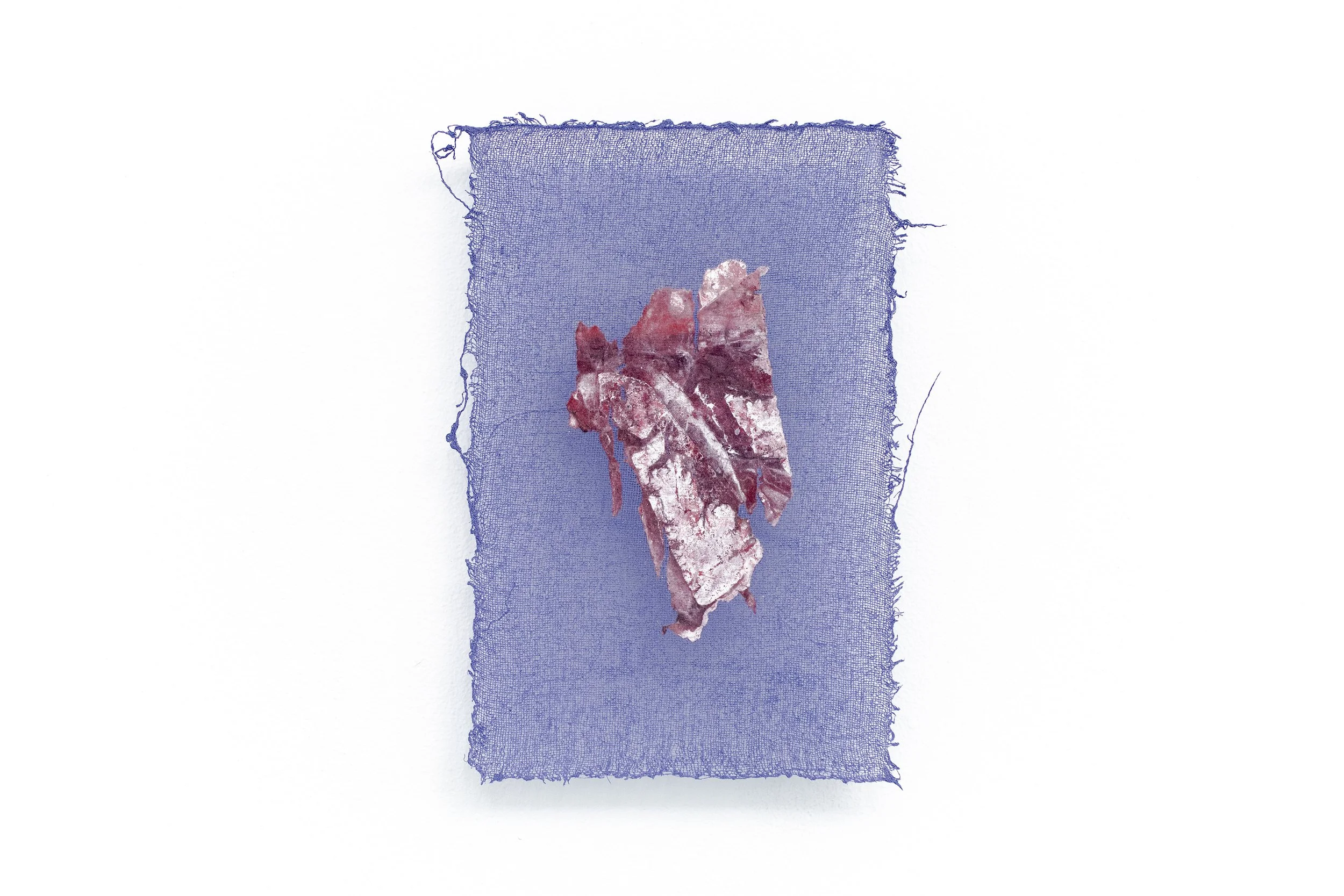XINYI LIU
Artist Statement
I lapsed into unconsciousness after a car accident. The huge crash suddenly brought my soul out of my body. I could see lots of me floating in the air and looking down toward the car. The whole world generated a kind of strange and uncanny beauty. The trauma was like a phantom in my brain. I began to seek out a way of dealing with the thought of my impending mortality.
While I was in the hospital, I felt my limbs were merely broken elements and parts for the doctors to repair and reconstruct. I thereby create works that metaphorically mimic the processes of treating wounds to heal. Like a doctor, I try to do surgeries for my wounded materials.
I work with mulberry paper, which resonates with the thin and silky quality of human skin. I imprint the paper with my skin and hand pressure. Human skin injects the paper with unpredictable textures, traces, veins, and patterns unique to the individual. The colors reflect flesh, dead skin, scars, and scabs. The fragments trace the stitching of wounds. The healing involves time and changes.
I subtract and rip the papers. I wet and unfold the papers. I re-touch and re-experience the trauma. Through my own “medical” manipulation, they become my “second skin.” I incorporate traditional Chinese rubbing techniques, mulberry paper-making and mounting techniques, and ancient oriental painting restoration techniques into my practice and develop them into more creative possibilities. Finally, I recover the papers’ wounds by releasing and mounting them on gauze.
In the series Chinese Vernacular Architecture, I apply traditional Chinese rubbing and monotype techniques to make prints from the vernacular elements around me in Beijing, including roof tiles, bricks, and ancient walls on mulberry paper, mimicking the traditional stone preservation process.
Moreover, I work with disposable washcloths from my daily use. I had a forced quarantine experience in China. I felt my time become static during that time. Therefore, I preserved and dyed the disposable washcloths day by day and imprinted them with my skin, as a recording of the time and the contact of skin on skin. They have been in intimate touch with my body. The integration of packaging bubbles and trash bags with cloths refers to a poetic metaphor for life and waste during this pandemic time.










